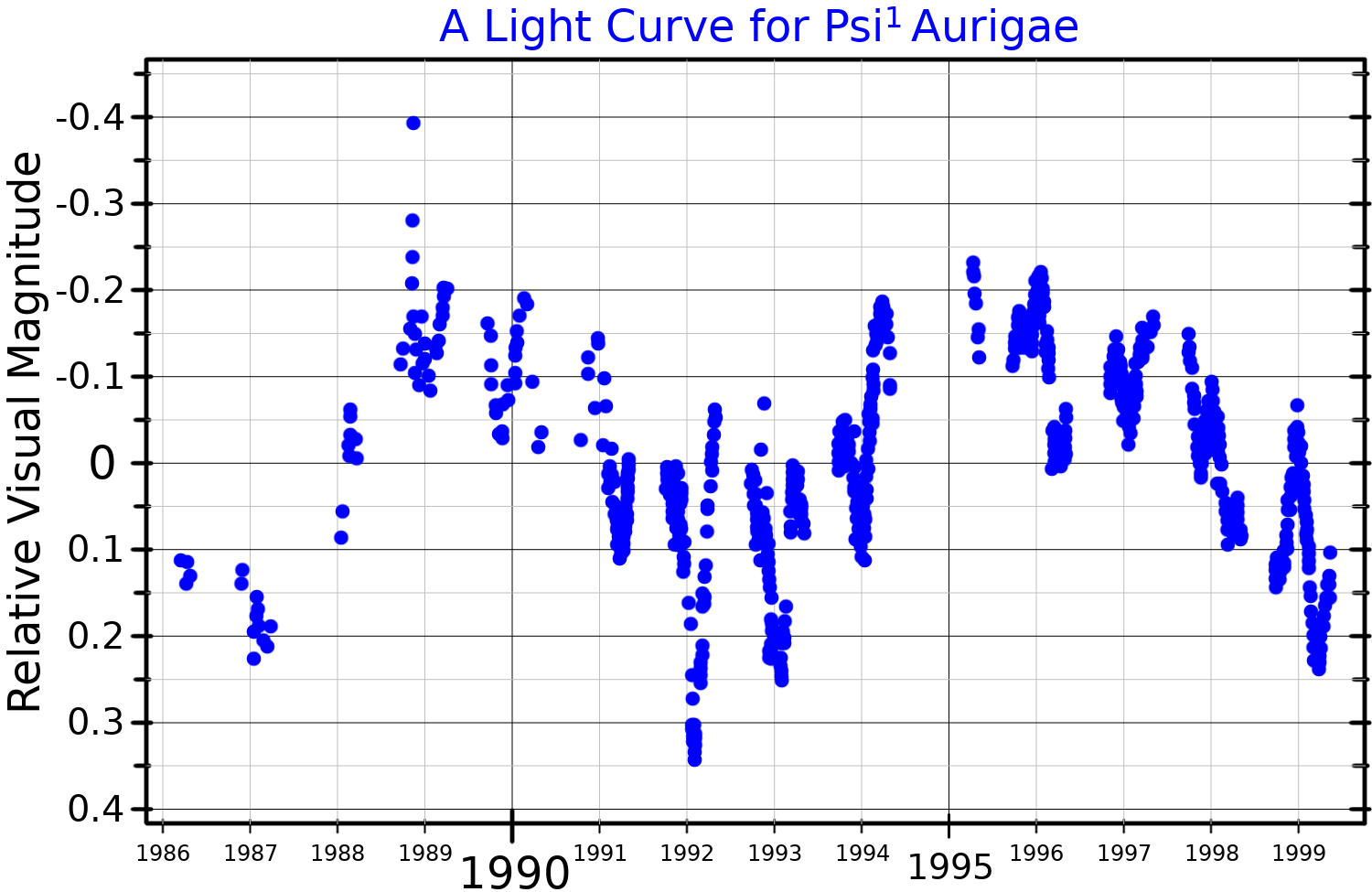Psi1 Aurigae on:
[Wikipedia]
[Google]
[Amazon]
__NOTOC__
Psi1 Aurigae (ψ1 Aur, ψ1 Aurigae) is a  This is a massive supergiant star with a
This is a massive supergiant star with a
HR 2289
Image Psi1 Aurigae
{{DEFAULTSORT:Psi1 Aurigae M-type supergiants Slow irregular variables Auriga (constellation) Aurigae, Psi01 Durchmusterung objects 044537 030520 Aurigae, 46 2289
star
A star is an astronomical object comprising a luminous spheroid of plasma (physics), plasma held together by its gravity. The List of nearest stars and brown dwarfs, nearest star to Earth is the Sun. Many other stars are visible to the naked ...
in the northern constellation
A constellation is an area on the celestial sphere in which a group of visible stars forms Asterism (astronomy), a perceived pattern or outline, typically representing an animal, mythological subject, or inanimate object.
The origins of the e ...
of Auriga
AURIGA (''Antenna Ultracriogenica Risonante per l'Indagine Gravitazionale Astronomica'') is an ultracryogenic resonant bar gravitational wave detector in Italy. It is at the Laboratori Nazionali di Legnaro of the Istituto Nazionale di Fisica Nuclea ...
. It is faintly visible to the naked eye with an apparent visual magnitude of 4.91. Based upon a measured annual parallax
Parallax is a displacement or difference in the apparent position of an object viewed along two different lines of sight and is measured by the angle or semi-angle of inclination between those two lines. Due to foreshortening, nearby objects ...
shift of , it is approximately distant from the Earth. It is receding from the Sun with a radial velocity
The radial velocity or line-of-sight velocity, also known as radial speed or range rate, of a target with respect to an observer is the temporal rate of change, rate of change of the distance or Slant range, range between the two points. It is e ...
of +4.7 km/s.
 This is a massive supergiant star with a
This is a massive supergiant star with a stellar classification
In astronomy, stellar classification is the classification of stars based on their stellar spectrum, spectral characteristics. Electromagnetic radiation from the star is analyzed by splitting it with a Prism (optics), prism or diffraction grati ...
of K5-M1Iab-Ib. It is a slow irregular variable of the LC type, with its brightness varying in magnitude by 0.44. The star is more than 14 times as massive as the Sun and is blazing with 63,579 times the Sun's luminosity. This energy is being radiated into outer space from its outer atmosphere at an effective temperature
The effective temperature of a body such as a star or planet is the temperature of a black body that would emit the same total amount of electromagnetic radiation. Effective temperature is often used as an estimate of a body's surface temperature ...
of 3,750 K, giving it the orange-red hue of a cool M-type star.
See also
*Psi Aurigae
The Bayer designation Psi Aurigae (ψ Aur, ψ Aurigae) is shared by nine star systems in the constellation Auriga (constellation), Auriga and one in Lynx (constellation), Lynx:
* Psi1 Aurigae, ψ1 Aurigae = 46 Aurigae
* Psi2 Aurigae, ψ2 Aurigae ...
References
External links
HR 2289
Image Psi1 Aurigae
{{DEFAULTSORT:Psi1 Aurigae M-type supergiants Slow irregular variables Auriga (constellation) Aurigae, Psi01 Durchmusterung objects 044537 030520 Aurigae, 46 2289